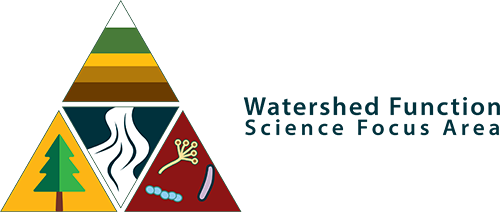1. The recorded presentations from the November 12th, 2019 Watershed Science Community Call can be here. For reference, the two keynotes can be found as follows:
- Kate Maher: “Mayhem in the meadows: Tracking and modeling soil respiration” starts at 23:50
- Ben Blonder: “Remote sensing of genotypes and genotype-dependent mortality in quaking aspen” starts 1:00:30
2. In the event some of you have yet to hear the news, the second USGS Next Generation Water Observing System (NGWOS) basin was recently announced. The new basin includes the combined drainages of the Upper Colorado and Gunnison Rivers, and it will serve as a western, snow-dominated counterpoint to the Delaware River NGWOS Basin.
This selection represents an incredible opportunity for DOE-BER to engage with USGS and other stakeholders (a driving requirement for NGWOS selections) through two of its SFA projects in the basin led by Berkeley Lab and SLAC. Its selection is expected to amplify BER’s investments in integrated hydrology and biogeochemistry, as well as the future of water in the west more broadly.
3. The dust has now settled on proposal submissions to the NSF Critical Zone Collaborative Network funding opportunity. I know there were some tremendous proposals submitted, and the East River watershed figures prominently in six of these. With some good fortune, we will have the opportunity to more fully engage with a growing critical zone effort across the United States and Puerto Rico. I’ve added the lead PI’s to our email list so they’re kept informed of future actives of relevance in the watershed.
4. For those of you who attended the Bodega Bay retreat last month, you hopefully had the opportunity to meet our new University DOE Early Career Proposal PI, Prof. Issac Larsen of UMASS. Isaac will be presenting his research plan to our Science Committee during one of the planned Spring teleconferences. Isaac is presently looking for a motivated PhD student to join his lab tied to his East River project and the posting can be found here. For faculty on this list who have or know of promising undergrads with an interest in critical zone processes, please pass this listing along.
5. Lastly, the Watershed SFA will be highlighted during a 90-minute block at Berkeley Lab’s Earth & Environmental Sciences Area booth at the AGU meeting. The Watershed pop-up is scheduled from 10a – 1130a on Wednesday December 11th. For those who haven’t had a chance to listen to the “sounds of the earth” and the musical enterprise being led by Antonio Menghini (Aarhus Geophysics) Burke Minsley (USGS), Burke will be joining us at the booth. A short preview of this fascinating enterprise can be found here.
I look forward to seeing many of you in person next week!




